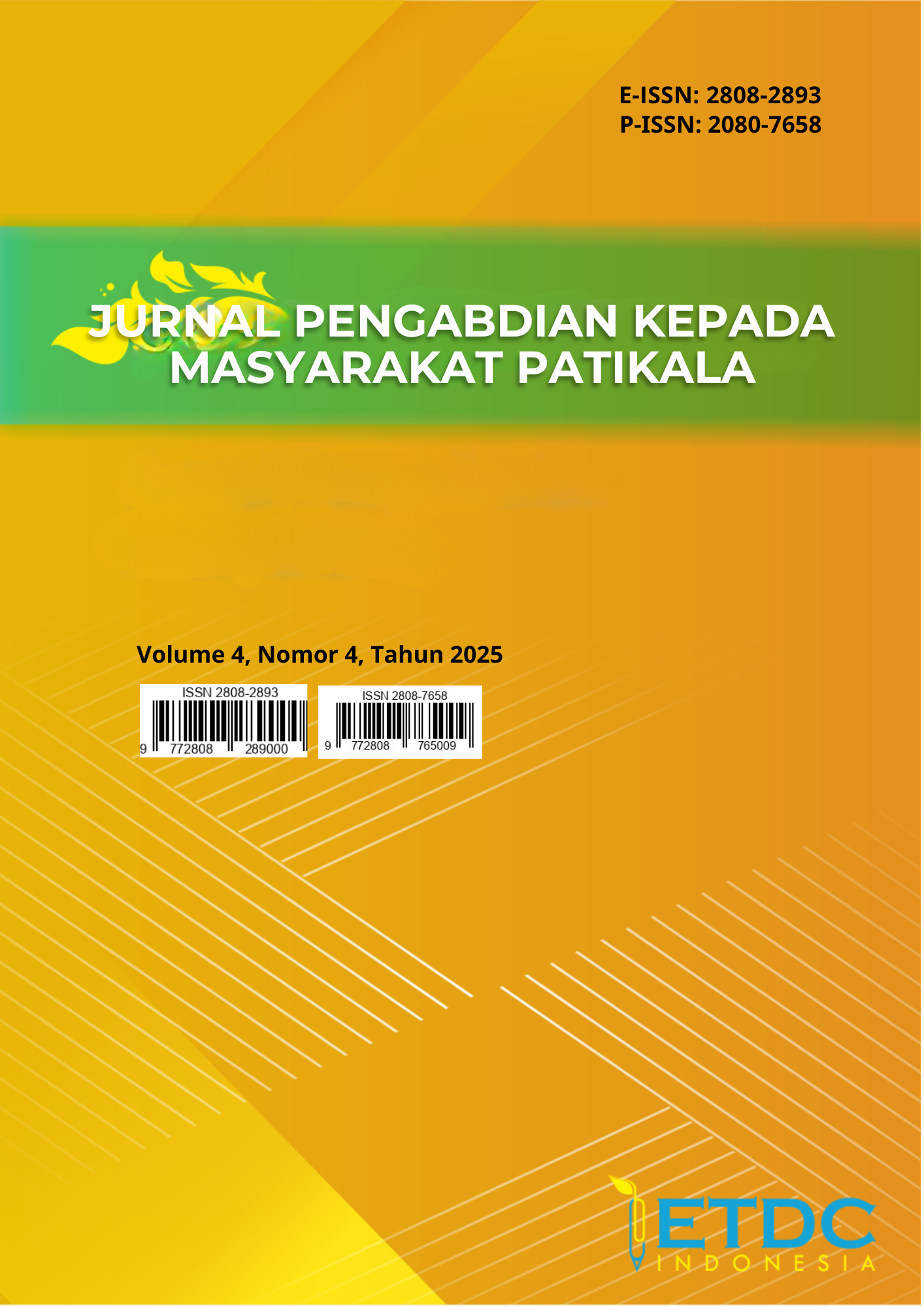PENERAPAN EMERGENCY RESPONSE PLAN DI SEKOLAH ANAK USIA DINI: PERHITUNGAN DAN PENATAAN JALUR EVAKUASI TK SAFINDA SURABAYA
https://doi.org/10.51574/patikala.v4i4.3218
Keywords:
Early Marriage, Disaster mitigation, ERP, Multi-storey buildings, Early childhoodAbstract
Indonesia is a country prone to disasters, especially earthquakes and fires, which have the potential to greatly threaten the safety of occupants of multi-storey buildings, including educational facilities such as kindergartens. TK Safinda Surabaya is one of the early childhood education institutions that does not yet have a standardized emergency evacuation route system, even though the building consists of two floors and is located in a densely populated area. The early age group is included in the category of vulnerable populations to safety risks during disasters. Therefore, this community service activity aims to help TK Safinda design and calculate emergency evacuation routes based on the real conditions of the building and the characteristics of its occupants. This activity is carried out through a participatory-educational approach involving the service team, teachers, and students. The implementation method includes direct observation, measuring building dimensions, calculating evacuation capacity, and compiling evacuation route maps and gathering points in accordance with the principles of the Emergency Response Plan (ERP) and the SFPE Handbook of Fire Protection Engineering reference. Evacuation time calculations are carried out based on parameters such as effective route width, population density, individual movement speed, and evacuation flow rate. The results of the activity show that the designed evacuation route has met the minimum standards for evacuation speed and capacity, and can be implemented effectively to support disaster preparedness. The implementation of ERP that is adjusted to the building structure and population of early childhood school users has been proven to be able to improve security, risk mitigation, and the understanding of school residents regarding emergency evacuation procedures. It is hoped that the results of this activity can be replicated in similar institutions in other densely populated and disaster-prone areas.
Downloads
References
BMKG. (2017). Informasi Seismotektonik Indonesia. Badan Meteorologi, Klimatologi, dan Geofisika. Diakses dari: https://www.bmkg.go.id/
BNPB. (2018). Pedoman Sistem Peringatan Dini dan Evakuasi Bencana. Badan Nasional Penanggulangan Bencana. Jakarta: BNPB.
BNPB. (2022). Data dan Informasi Bencana Indonesia Tahun 2017–2021. Pusat Data, Informasi dan Komunikasi Kebencanaan BNPB. Diakses dari: https://bnpb.go.id/
Gwynne, S., Galea, E. R., Lawrence, P. J., & Filippidis, L. (1999). "A review of the methodologies used in the computer simulation of evacuation from the built environment." Building and Environment, 34(6), 741–749.
ICC (International Code Council). (2018). International Building Code (IBC).
ISO. (2004). ISO 14001:2004 Environmental Management Systems – Requirements with Guidance for Use. International Organization for Standardization.
Hurley, M. J. (Ed.). (2016). SFPE Handbook of Fire Protection Engineering (5th ed.). New York, NY: Springer.
Kuligowski, E. D., Peacock, R. D., & Hoskins, B. L. (2010). A Review of Building Evacuation Models. National Institute of Standards and Technology (NIST).
National Fire Protection Association. (2018). NFPA 101: Life Safety Code. Quincy, MA: National Fire Protection Association.
Nugraha, R. (2024). Perencanaan Jalur Evakuasi dan Titik Kumpul pada Bangunan Bertingkat untuk Keadaan Darurat. Surabaya: Institut Teknologi Sepuluh Nopember.
NFPA (2021). NFPA 101: Life Safety Code. National Fire Protection Association.
O’Connor, D. J., & Paulsen, J. (2011). Emergency Evacuation Planning for Your Workplace: From Chaos to Life-Saving Solutions. American Management Association.
Spearpoint, M. J. (2012). "Evacuation Time Calculations for Buildings." Fire Safety Journal, 48, 79–87.
Sutrisno, E., & Pramudito, A. (2020). "Analisis Jalur Evakuasi pada Gedung Bertingkat Menggunakan Simulasi Egress." Jurnal Teknik Sipil dan Perencanaan, 22(1), 33-40.
Yuen, K. K., Chow, W. K., & Zou, G. (2007). "Evacuation strategies for disabled persons in high-rise buildings." Building and Environment, 42(2), 1073–1080.
















